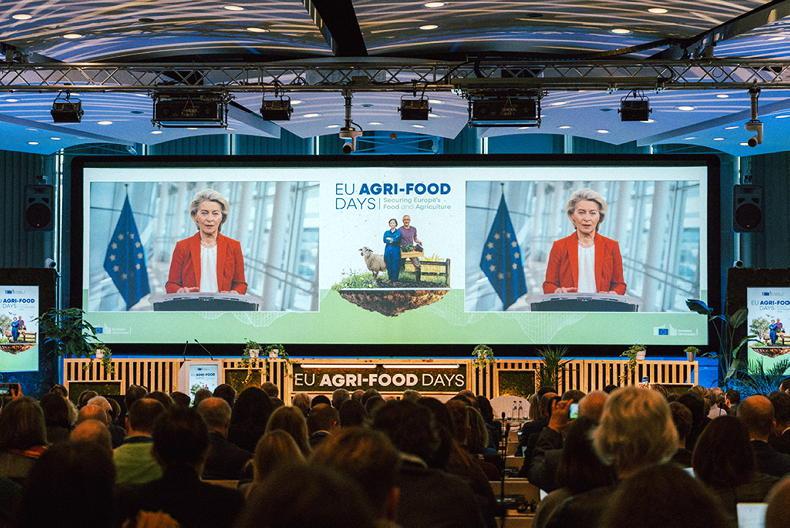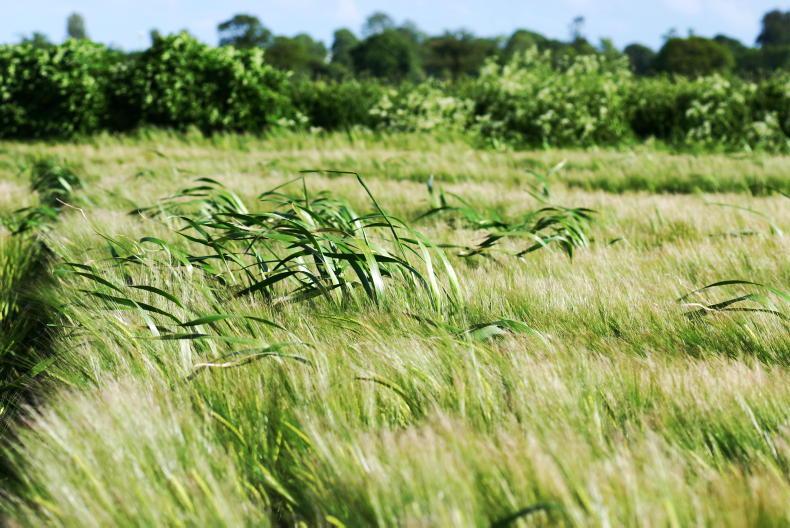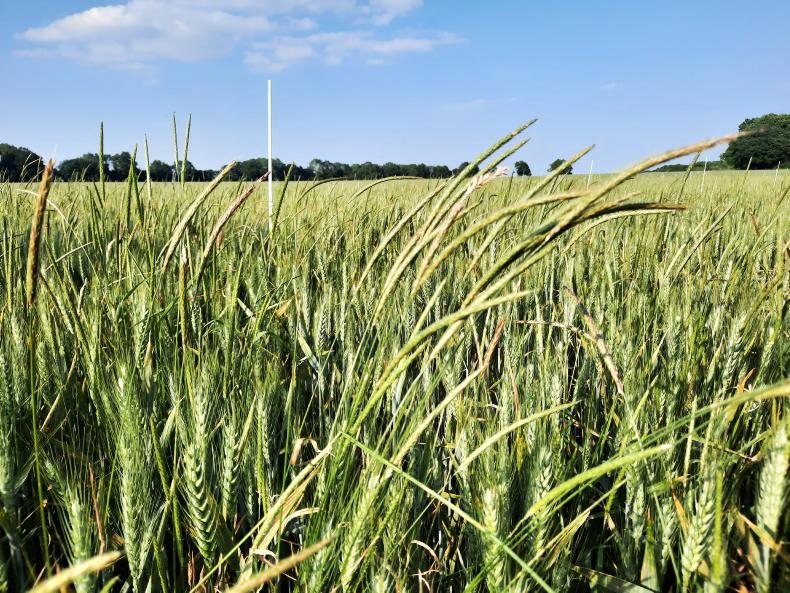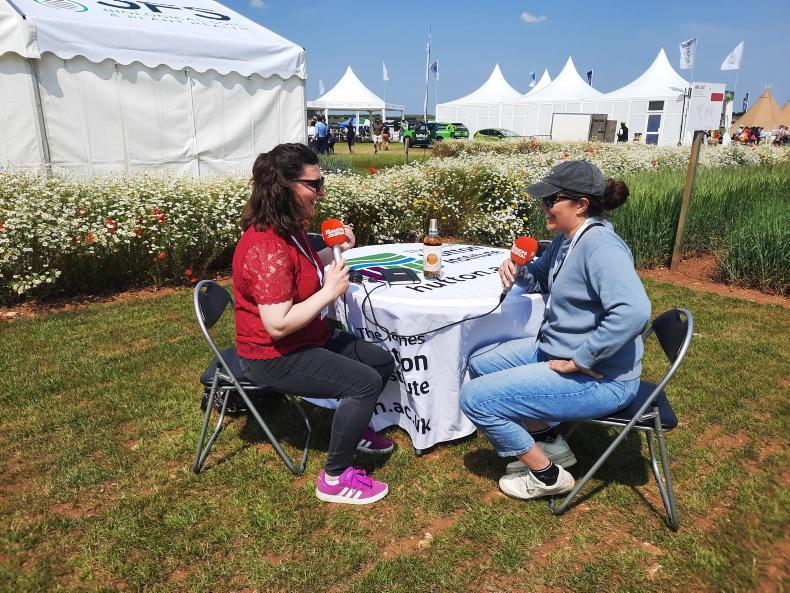Francis Monahan is a mixed farmer based near Straffan, Co Kildare. He grows about 110 acres of cereals and fattens cattle over the winter. Francis has always run his own combine and 2018 was the year for a new one.
The previous combine was a John Deere 1157 with a 10ft cut. This combine came to the farm in 1992 as a new machine and gave Francis 25 years of good service. The combine had clocked less than 2,000 hours when it left for another farmer in Roscommon to cut around 50 acres a year.
When it came to the decision about what to buy, there were two options – a John Deere w330, which is a rebadged Sampo machine or the baby of the New Holland range, the TC 4.90. Both are small four-walker machines with four-cylinder engines, a rare thing in Ireland these days.
Francis chose the New Holland model as he has been dealing with Lyons & Burton since the 1970s and they are located close to him. He was also encouraged by the fact that the New Holland is a fully fledged New Holland.
I asked Francis why he decided to buy a new machine. He said that it meant that he knew the machine and all the hours clocked would be his. A secondhand combine would probably have 1,000 hours on it and his old machine left with not much more, so his theory was not to change unless you’re getting a new one.

The machine came with a straw chopper.
The machine
The T4.90 is the smallest combine that New Holland makes. It comes with a 13ft head and auto-float. It was decided that the lateral tilt was not required on Francis’s land. A straw chopper was also fitted to the machine, not that it will be used this harvest.
The baby New Holland is powered by the latest four-cylinder Tier 4B engine from FPT and it produces 175hp. The only real upgrade that was specified on this machine was oversized tyres, with a set of 750/65 R28 being the biggest possible. The output of the machine is not hugely important this year as the weather has allowed Francis to be picky about when he cuts and how he cuts his crop. This is one of the reasons that Francis likes to own a combine and, even in a less favourable year, he will have the output to pick the correct times to cut and not miss opportunities to get his harvest. He is very meticulous about the way he cuts and thrashes his grain.
He makes sure that all his grain is in the tank and there are little or no losses. This sometimes means driving very slowly and reducing the cleanliness of the sample. This works for Francis as he dries all his own grain with a 2t-per-hour drier and runs it through a seed cleaner during the process. This cleans up any issue with the sample and guarantees that he has got as close as possible to every grain from the field.
Francis works as a one-man show, leaving his trailers on the headland and emptying them himself at the dryer whenever required.
The little combine has clocked nearly 35 drum hours so far and, as he has cut 55 acres, this gives a work rate of 1.6 acres per hour. This is nowhere near the capacity of the machine but it gets the job done the way Francis wants it done.
On the fuel front, the TC 4.90 used 230 litres on 32 acres this season. This is a rate of 7.2 litres per acre and 11.5 litres per hour of cutting.
The grain tank has a 5,000-litre capacity, which holds around 3t of grain. This works well for Francis as his three trailers have 6t capacity so two tanks fill them ready for the shed.
The main grain-carting tractor is a John Deere 6110.

This is a four-walker machine.
Investment
This machine is a serious investment for an operation of this size but Francis sees the combine as an essential tool for every cereal grower as it gives the control to cut the major income source for the year in the way you want and at the optimal time. Having had the last combine from new for 26 seasons, he sees this machine doing the same job for him for the future with the added bonus of some more comfort and output to make life easier for himself. This machine will last every bit as long as the last one as Francis is very precise about everything including servicing. The John Deere combine was given an oil change every 100 hours and the whole machine was a credit to him when it left. Being the owner of a new 182-registered combine is something that most farmers can only dream of but this shows that the right machine can make sense for certain growers.
Francis Monahan is a mixed farmer based near Straffan, Co Kildare. He grows about 110 acres of cereals and fattens cattle over the winter. Francis has always run his own combine and 2018 was the year for a new one.
The previous combine was a John Deere 1157 with a 10ft cut. This combine came to the farm in 1992 as a new machine and gave Francis 25 years of good service. The combine had clocked less than 2,000 hours when it left for another farmer in Roscommon to cut around 50 acres a year.
When it came to the decision about what to buy, there were two options – a John Deere w330, which is a rebadged Sampo machine or the baby of the New Holland range, the TC 4.90. Both are small four-walker machines with four-cylinder engines, a rare thing in Ireland these days.
Francis chose the New Holland model as he has been dealing with Lyons & Burton since the 1970s and they are located close to him. He was also encouraged by the fact that the New Holland is a fully fledged New Holland.
I asked Francis why he decided to buy a new machine. He said that it meant that he knew the machine and all the hours clocked would be his. A secondhand combine would probably have 1,000 hours on it and his old machine left with not much more, so his theory was not to change unless you’re getting a new one.

The machine came with a straw chopper.
The machine
The T4.90 is the smallest combine that New Holland makes. It comes with a 13ft head and auto-float. It was decided that the lateral tilt was not required on Francis’s land. A straw chopper was also fitted to the machine, not that it will be used this harvest.
The baby New Holland is powered by the latest four-cylinder Tier 4B engine from FPT and it produces 175hp. The only real upgrade that was specified on this machine was oversized tyres, with a set of 750/65 R28 being the biggest possible. The output of the machine is not hugely important this year as the weather has allowed Francis to be picky about when he cuts and how he cuts his crop. This is one of the reasons that Francis likes to own a combine and, even in a less favourable year, he will have the output to pick the correct times to cut and not miss opportunities to get his harvest. He is very meticulous about the way he cuts and thrashes his grain.
He makes sure that all his grain is in the tank and there are little or no losses. This sometimes means driving very slowly and reducing the cleanliness of the sample. This works for Francis as he dries all his own grain with a 2t-per-hour drier and runs it through a seed cleaner during the process. This cleans up any issue with the sample and guarantees that he has got as close as possible to every grain from the field.
Francis works as a one-man show, leaving his trailers on the headland and emptying them himself at the dryer whenever required.
The little combine has clocked nearly 35 drum hours so far and, as he has cut 55 acres, this gives a work rate of 1.6 acres per hour. This is nowhere near the capacity of the machine but it gets the job done the way Francis wants it done.
On the fuel front, the TC 4.90 used 230 litres on 32 acres this season. This is a rate of 7.2 litres per acre and 11.5 litres per hour of cutting.
The grain tank has a 5,000-litre capacity, which holds around 3t of grain. This works well for Francis as his three trailers have 6t capacity so two tanks fill them ready for the shed.
The main grain-carting tractor is a John Deere 6110.

This is a four-walker machine.
Investment
This machine is a serious investment for an operation of this size but Francis sees the combine as an essential tool for every cereal grower as it gives the control to cut the major income source for the year in the way you want and at the optimal time. Having had the last combine from new for 26 seasons, he sees this machine doing the same job for him for the future with the added bonus of some more comfort and output to make life easier for himself. This machine will last every bit as long as the last one as Francis is very precise about everything including servicing. The John Deere combine was given an oil change every 100 hours and the whole machine was a credit to him when it left. Being the owner of a new 182-registered combine is something that most farmers can only dream of but this shows that the right machine can make sense for certain growers.












SHARING OPTIONS